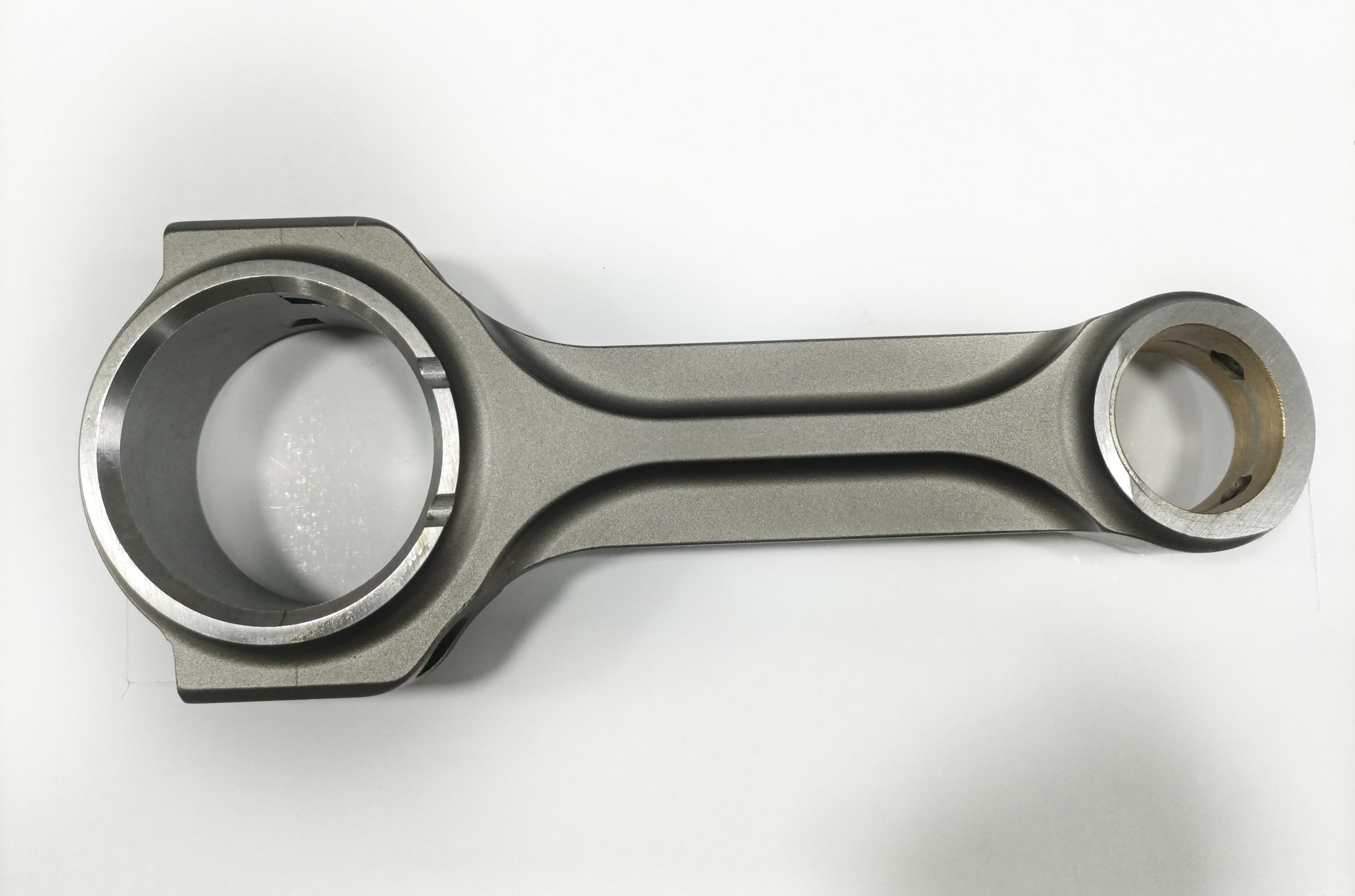The connecting rod parts are critical components within internal combustion engines that play a significant role in power transmission and engine performance. A connecting rod is made up of several parts, including the big end, small end, shank, connecting rod bolts, and bearing shells. Understanding the importance of each part and how they work together is vital to ensure proper engine operation and maintenance. This article will discuss the essential connecting rod parts and their functions, as well as tips for proper installation and maintenance.
The big end is the lower portion of the connecting rod that attaches to the crankshaft. This part is subjected to extreme forces during engine operation, making it crucial to choose the right materials and design for optimal durability and performance. The big end houses the bearing shells, which allow for smooth rotation between the connecting rod and crankshaft.
The small end is the upper portion of the connecting rod that connects to the piston via the wrist pin. It is also subjected to high stress during engine operation, making material selection and design important factors for this part. The small end typically features a bushing, which allows for smooth rotation between the connecting rod and wrist pin.
The shank is the central part of the connecting rod, connecting the big end to the small end. The shank’s design and material selection can significantly impact the connecting rod’s strength and weight. Common designs include I-beam and H-beam, each with unique benefits. I-beam connecting rods are lightweight and offer excellent resistance to bending forces, making them suitable for many street and mild performance applications. Conversely, H-beam connecting rods provide increased strength and rigidity, making them ideal for high-horsepower and racing applications.

Connecting rod bolts are essential components that secure the big end cap to the connecting rod. These bolts are subjected to extreme stress during engine operation, making it crucial to choose high-quality fasteners to ensure a secure connection and prevent failures. Opt for connecting rod bolts made from high-strength materials, such as ARP 2000 or L19, for superior clamping force and reliability.
Bearing shells are thin, semi-circular inserts placed between the connecting rod big end and the crankshaft journal. These shells reduce friction and wear, allowing for smooth rotation between the connecting rod and crankshaft. It is essential to choose the appropriate bearing material and size to ensure optimal engine performance and longevity.
Proper installation and maintenance of connecting rod parts are vital for engine performance and reliability. Always follow the manufacturer’s torque specifications, and use a calibrated torque wrench for a secure connection. Apply a quality lubricant to the connecting rod bolts and threads to reduce friction and allow for accurate torque readings. Regularly inspect connecting rod parts for signs of wear or damage, and address any concerns promptly to prevent potential issues from escalating into costly failures.
In conclusion, understanding the importance and function of connecting rod parts is crucial for optimizing engine performance and longevity. By selecting the right components, following proper installation procedures, and maintaining your engine diligently, you can ensure the smooth operation and performance of your vehicle’s engine.